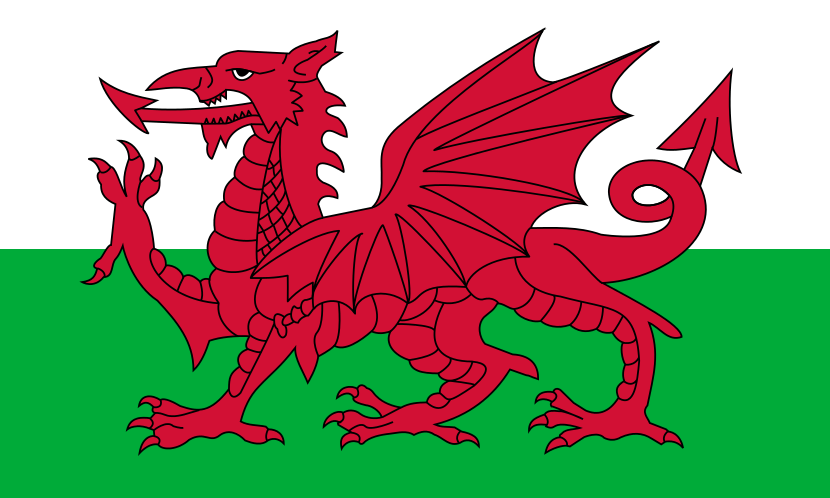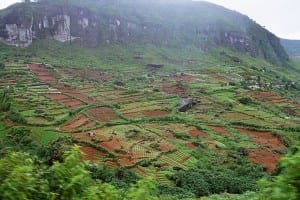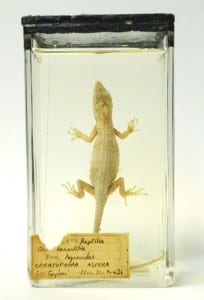Specimen of the Week 228: Rough-nosed horned lizard
By Dean W Veall, on 26 February 2016
Hello Specimen of the Week fans, Dean Veall here. We’re mixing it up with our weekly specimen blogs, publishing on Fridays and making them shorter and snappier. So here goes. My main motivation for choosing this specimen is the pure patriotism of a Welsh man exiled here in London. How, you may ask, does this small lizard indigineous to Sri Lanka invoke the land of my fathers, green valleys, cawl and industrial heritage? It be a dragon……
Red Dragons
The short nosed-horned lizard (Ceratophora aspera) belongs to the sub family of Agamidae lizards known as Draconinae, which derives its name from the Latin for dragon, (see how I got there). Totally sames as the red dragon of 7th Century King of Gwynedd Cadwaldar.

Rough-nosed lizard (Ceratophora aspera) By SajjadF – Own work, CC BY 3.0, https://commons.wikimedia.org/w/index.php?curid=29421896

The flag of Wales By UnknownVector graphics by Tobias Jakobs – Open Clipart Library, Public Domain, https://commons.wikimedia.org/w/index.php?curid=355609
Horns vs. size vs. flight
Despite not being the reptile you would naturally associate with dragons, that mantle belongs to the larger Komodo dragon or the gliding lizards of the genus Draco, these lizards are worthy recipients of the association. Males of the species develop horns on their snouts upon reaching sexual maturity. Our specimen is lacking that horn which would suggest it is either a female or a juvenile.
Threats to dragons
These rough-horned lizards are found in the undisturbed moist lowland rainforests around the Ratnapura region of Sri Lanka. As fierce as these dragons may be to the small insects that they prey upon, according to the IUCN Red List, they are categorised as vulnerable to extinction. This is due to the their sensitivity to habitat disruption. Over the last century Sri Lanka has lost some 20 per cent of its primary rainforest cover, with only 5 per cent of the island’s original moist lowlands remaining. Such severe deforestation, primarily for conversion to agricultural use such as tea plantations, is putting pressure on the populations of this lizard, causing populations to decrease across the region.[1]

Tea plantation in Sri Lanka By by Anjadora – http://flickr.com/photos/anyadora/96026972/, CC BY-SA 2.0, https://commons.wikimedia.org/w/index.php?curid=3125399
However, the good news for this species is that major populations are found in the Sinharaja Natural Heritage Wilderness Area where such deforestation and mining activity that caused populations to decline elsewhere are severely controlled.
This blog is going out just before Saint David’s Day on 1st March, so I think I’ll end where I begun extolling Wales, so here’s a video to rouse the spirits.
Dydd Gŵyl Dewi Hapus!
Dean Veall is Learning and Access Officer at the Grant Museum of Zoology
- Somaweera, R. & de Silva, A. 2010. Ceratophora aspera. The IUCN Red List of Threatened Species 2010: e.T170383A6773297. http://dx.doi.org/10.2305/IUCN.UK.2010-4.RLTS.T170383A6773297.en. Downloaded on 25 February 2016.
 Close
Close


